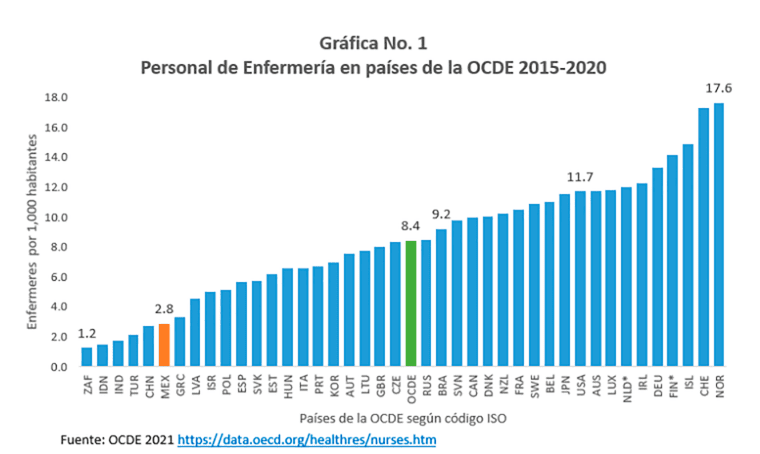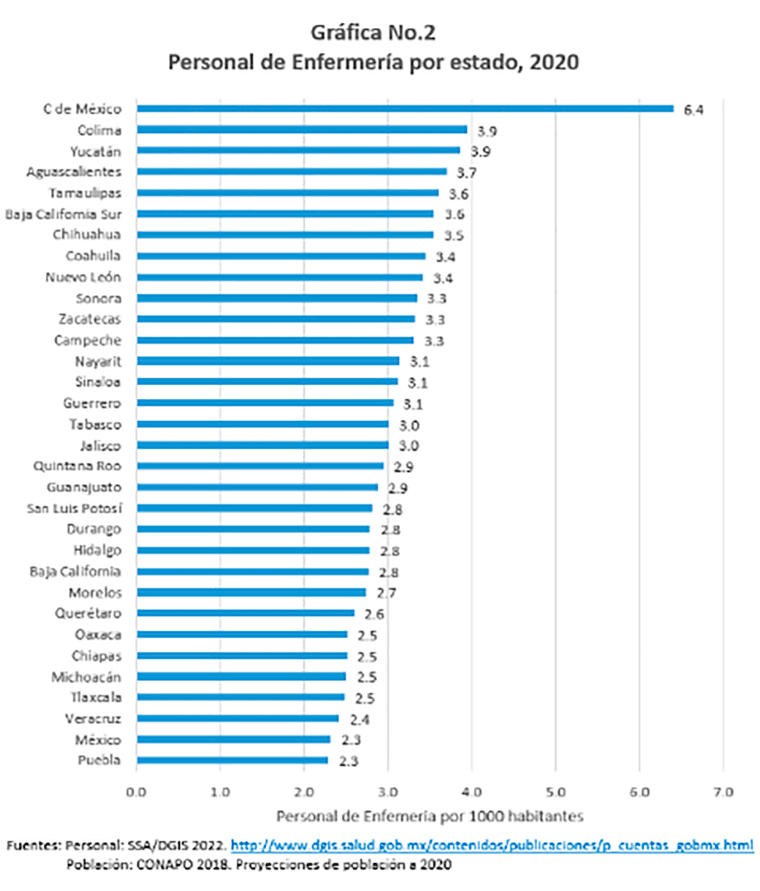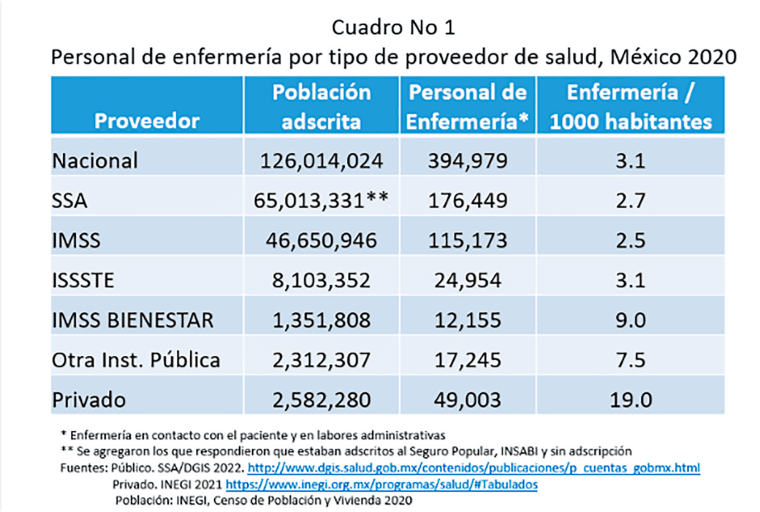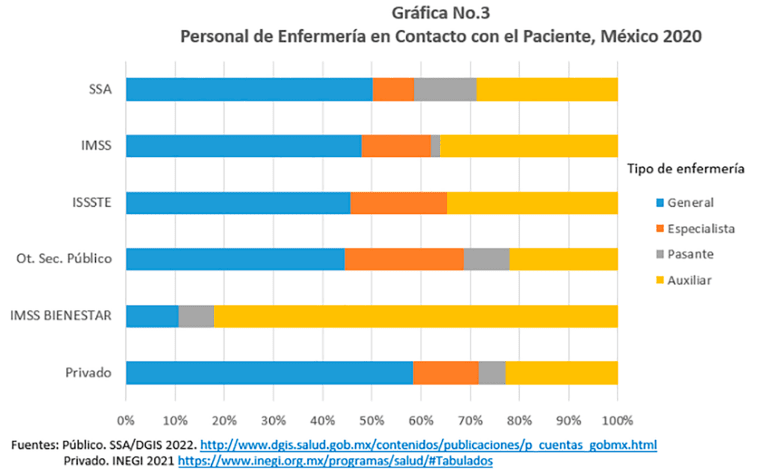On May 12 -accepted as the national and international day of nursing- recognition was made of their work in the IMSS, ISSSTE and SSA separately. A mirror image of the fragmentation of the health system in Mexico. Three days later, on May 15, Teacher’s Day was celebrated in Mexico. By decree since 1917, all those who dedicate their lives to teaching are honored. This is how life will continue during the month of May and the rest of the year. One day themed celebrations, speeches, awards, recognitions and the next day, change of theme. I wonder if it is appropriate to turn the page on the celebrations from nursing to teaching, from teaching to the International Day of Arterial Hypertension on May 17; to the international day for the eradication of obstetric fistula on May 23; and to the international day without tobacco on May 31. There are plenty of topics, what is missing is consistency, continuity and commitment to health personnel who are responsible for caring for health and protecting the population from disease. To them and them, who protects them?
The International Council of Nursing called on May 12, 2022… the time has come for governments and health systems to invest in nursing education, address the growing nursing shortage, provide positive practice environments and remuneration adequately, ensure gender equality and involve nurses in decision-making at all levels in all aspects of health and health care…
It is not called in a vacuum, there is sufficient evidence that the financial resources destined to combat the nursing deficit are not enough or are used inefficiently. The numbers tell us that in Mexico not only is there a lack of nursing personnel, but that the one that exists is poorly distributed geographically, by provider, and the one that exists does not have sufficient preparation to meet health needs. According to OECD data (average from 2015 to 2020), Mexico is one of the countries with the fewest nursing personnel per 1,000 inhabitants. Six times less staff than Norway and Switzerland that top the list. Four times less than the US and three times less than Brazil or the OECD average (see graph 1).

If the distribution of nursing personnel by state in 2020 is analyzed (graph 2), we observe that 30 states are below the 16th percentile of the OECD countries (less than Latvia LVA) and CDMX is in the 30th percentile (near Hungary, HUN). A person in CDMX has 2.8 times more access to nursing staff than a person who lives in Puebla or Edo. from Mexico. It is not only about correcting the national deficit, but also reducing the historical gap between states. This task becomes more complex because the national health system is moving from a decentralized organization to a centralized one. This process is generating tensions in the staff due to changes in working conditions and assignment.

Nursing according to service provider
In Mexico there are no good sources that allow measuring the population assigned to the provider. In fact, the figure that best describes this situation comes from household surveys that collect information by self-report (Census 2020 or ENIGH 2020), however, to find out the density of this staff by provider, we use two sources: nursing staff assigned to each provider reported by the General Directorate of Health Information of the Ministry of Health (DGIS) and the data generated by the 2020 population and housing census. The figures that the providers report as assigned to their units are not used. The table shows the number of nurses per 1,000 inhabitants for 2020. It is noteworthy that IMSS and SSA have the fewest nursing personnel and IMSS-Well-being and the private sector have the most in relative terms.

According to the DGIS, of every 100 people who work in nursing in Mexico, 94.3% are in contact with the patient and 5.7% perform administrative tasks. Of the former, 48.8% are general nurses; 11.7% specialists; 31.9% assistants and 7.7% interns. When the distribution of these levels of preparation by provider is analyzed, discrepancies that draw attention are again observed. Nursing staff with professional training (general and specialists) represents 60% and social security and the private sector are within that level. In contrast, the SSA concentrates 42% of the staff between auxiliaries and interns and IMSS-Wellness practically rests nursing practice on auxiliaries, four out of five in said institution belong to this category.
The challenge that the national health system in Mexico has regarding the nursing staff is not minor, much less, easy to meet. Investing in nursing education has a medium-term health and economic return. The more nurses earn their bachelor’s degrees, the more likely they are to go on to a specialty or postgraduate degree. Post-bachelor’s training leads to higher retention in the nursing workforce. But I am not very sure that the authorities know what these personnel are pursuing in terms of continuity. We know that it was the sector most susceptible to getting sick from Covid-19, but with less lethality than the medical profession. However, beyond the pandemic, in other countries it has been documented that nursing personnel want to stop exercising their health care activities. Although the demand for more wages is very important, there are also other reasons such as factors such as feeling more committed to work, doing work that has repercussions, that is, meaningful work, and maintaining good personal health. In a survey conducted in the United States, France, Singapore, Brazil, Japan, and the United Kingdom, many nurses surveyed indicated uncertainty about whether they had sufficient skills to perform in advanced clinics.

To take seriously the call of the International Council of Nursing, actions of various kinds are required. Update the records of the nursing staff, apply surveys to find out their expectations, but above all study the feasibility of a state policy on human resources for health where nursing staff lead the demand.
* The author is a professor at the University of Washington’s Department of Health Measurement Sciences and the Institute for Health Metrics and Evaluation. https://www.healthdata.org/about/rafael-lozano.
Twitter: @DrRafaelLozano